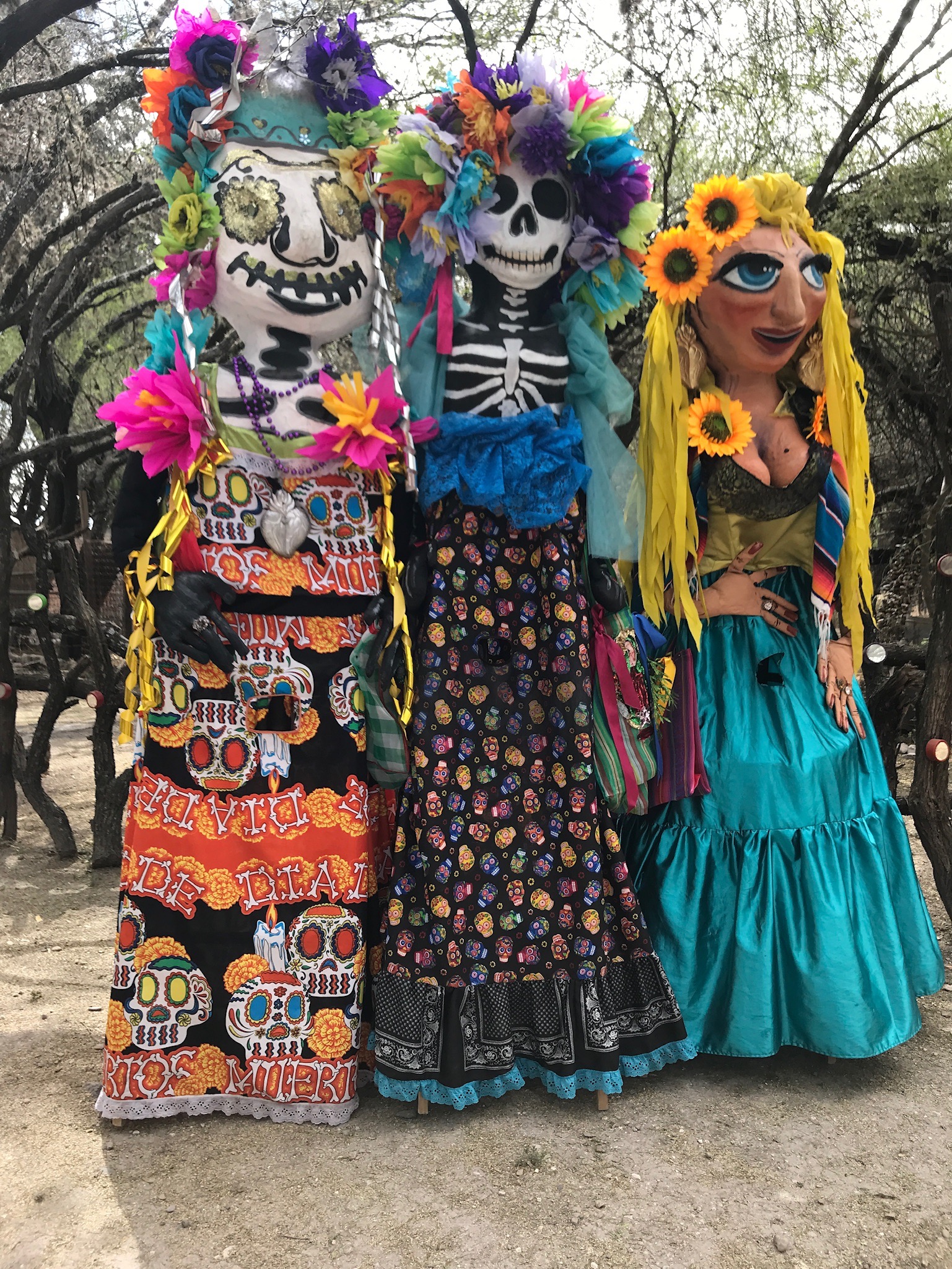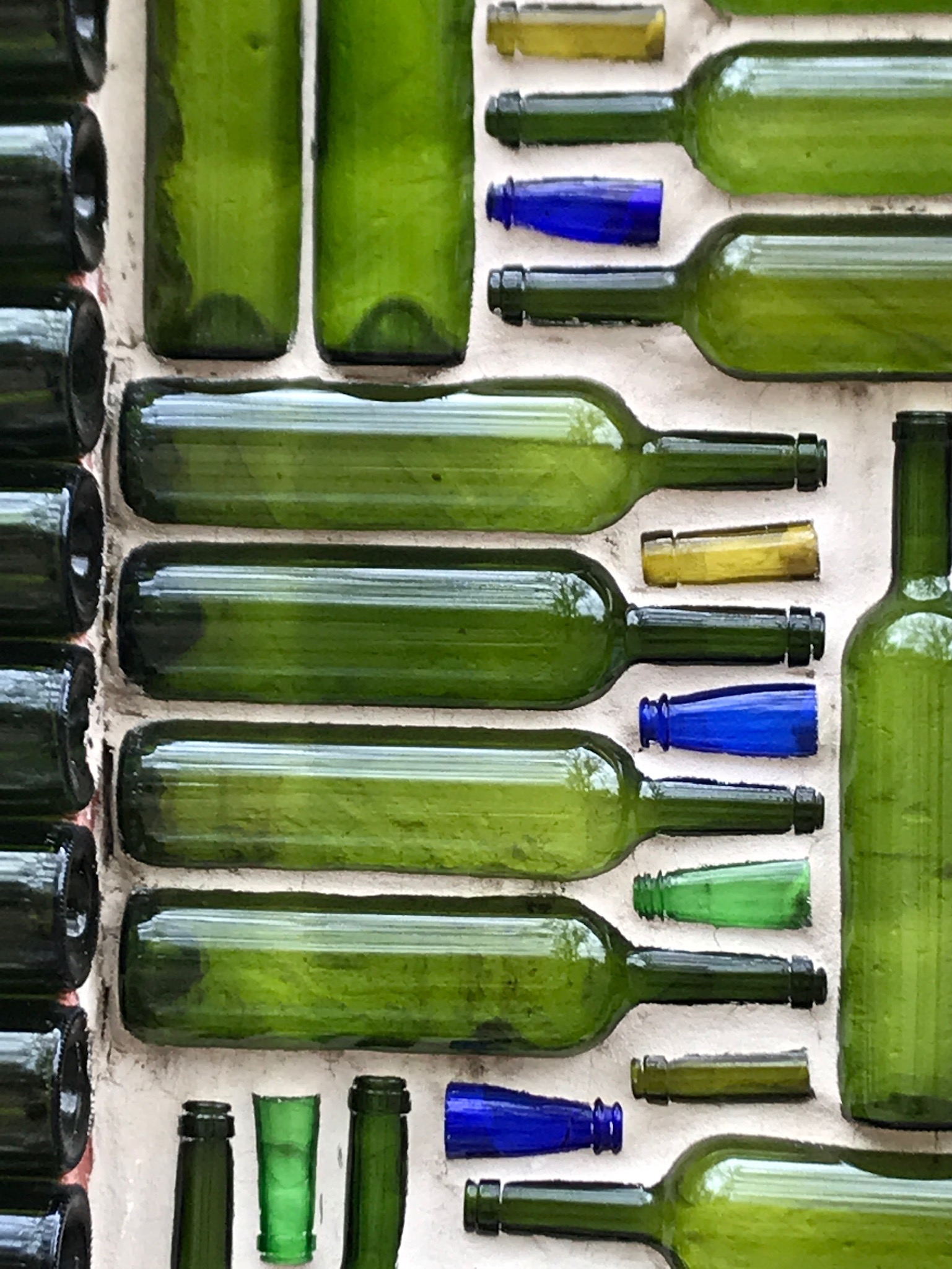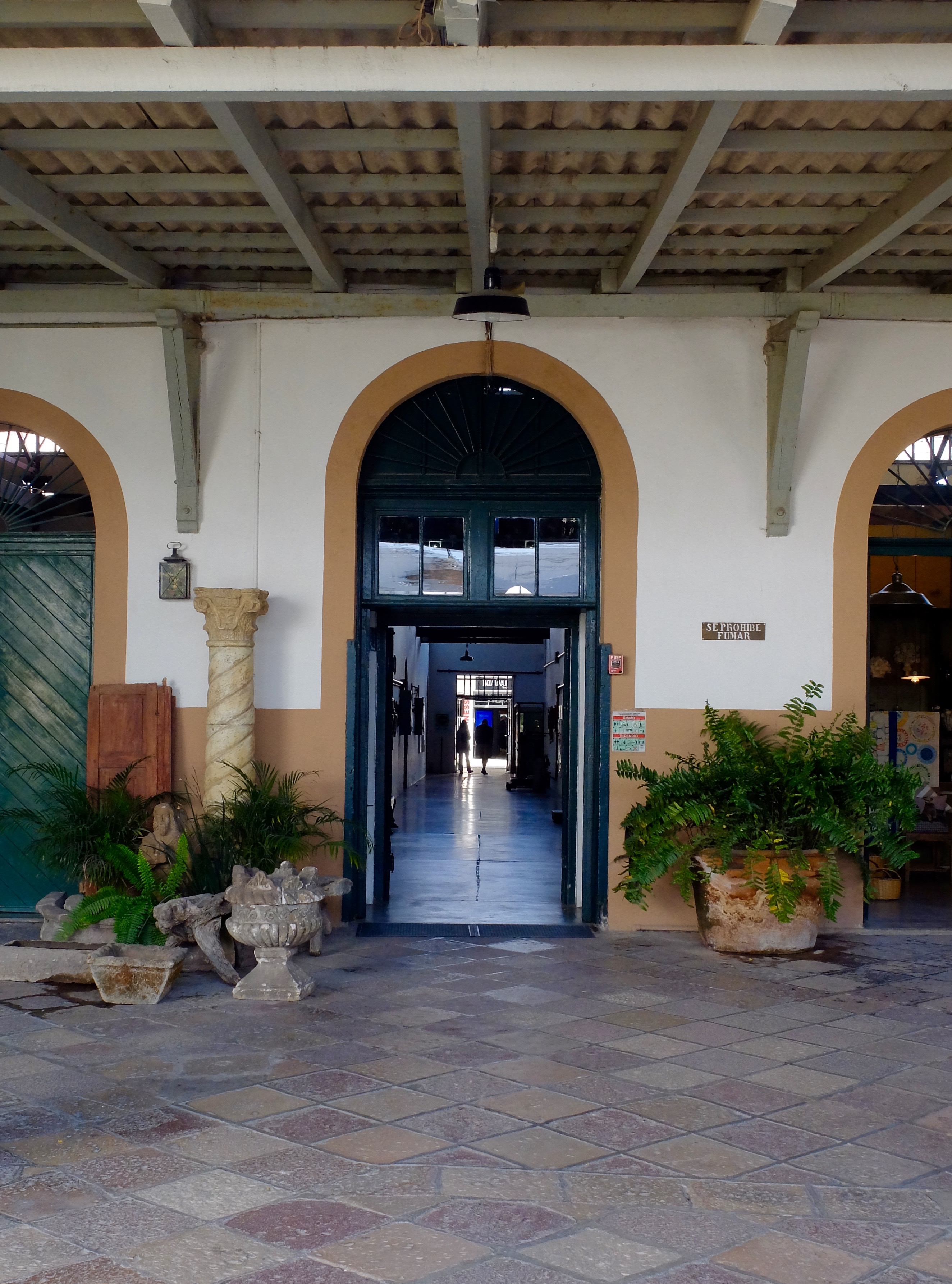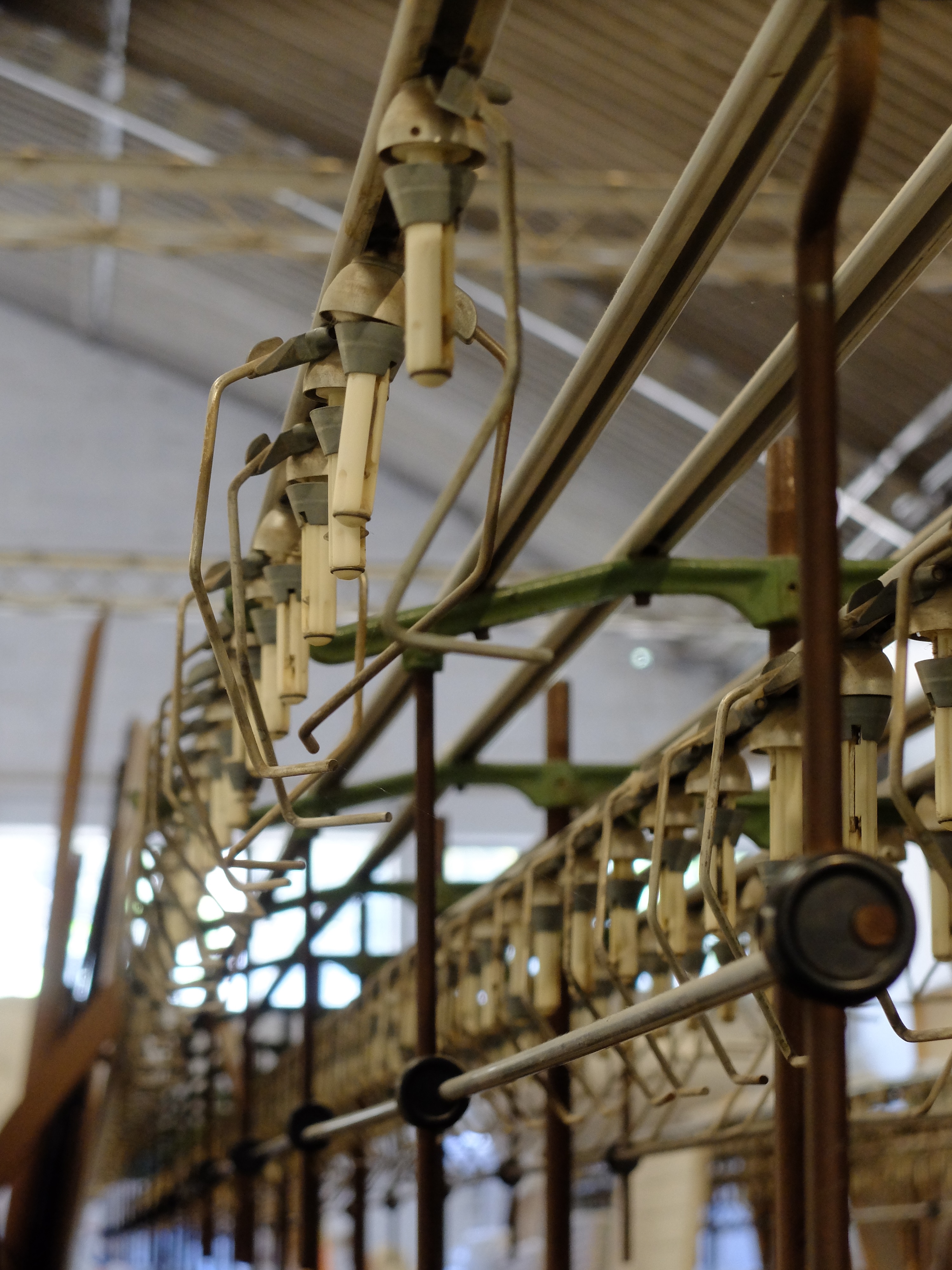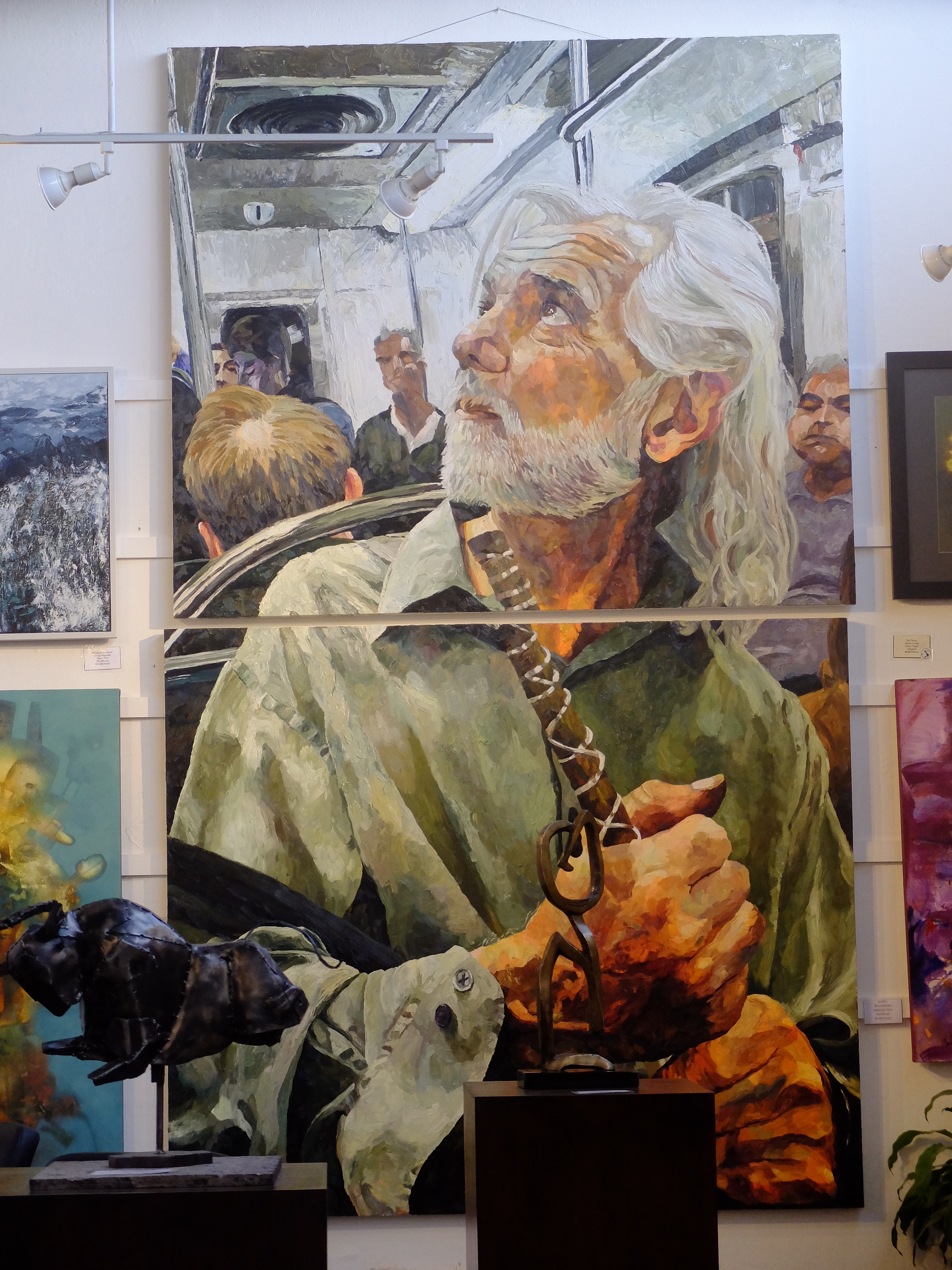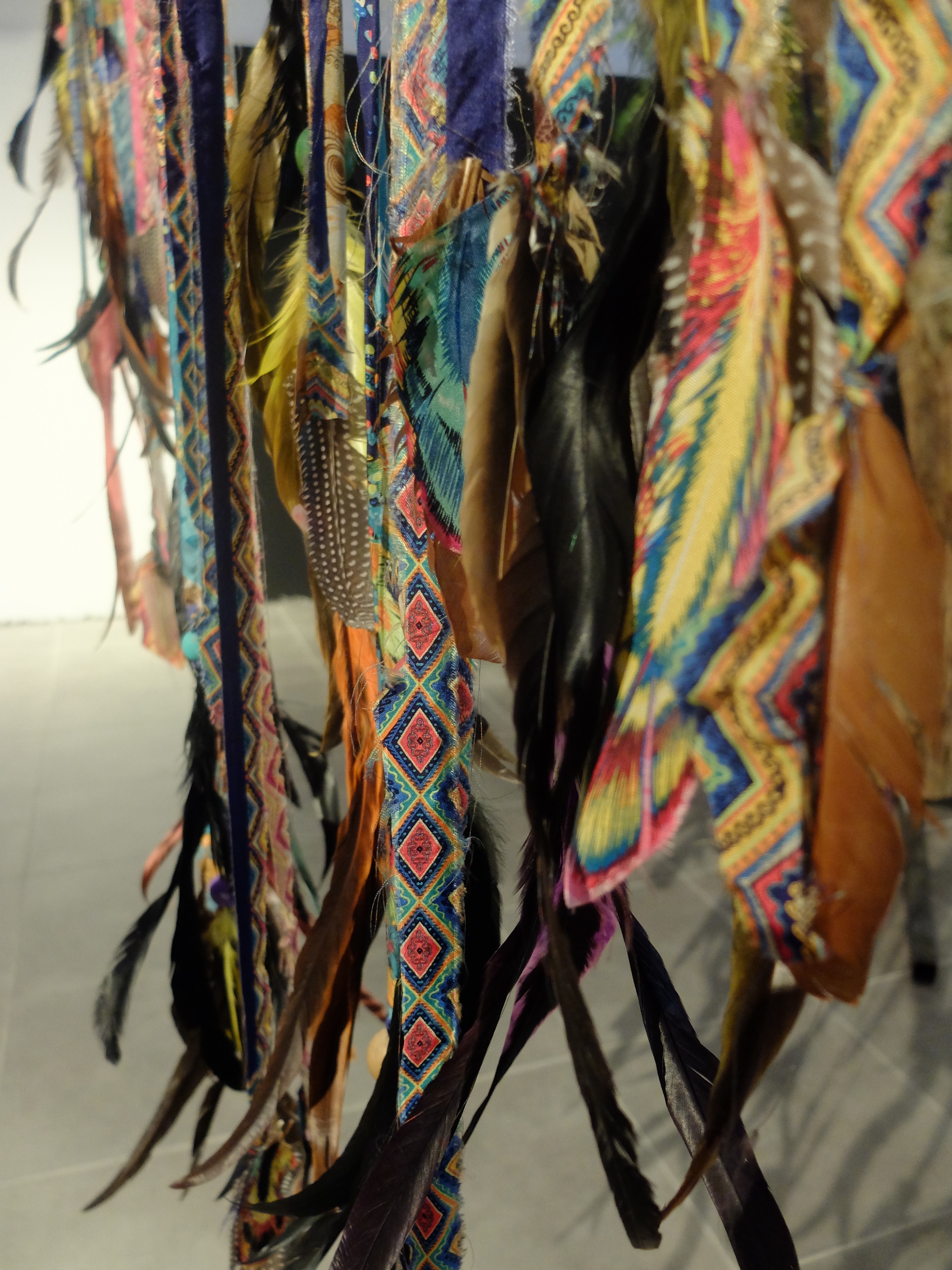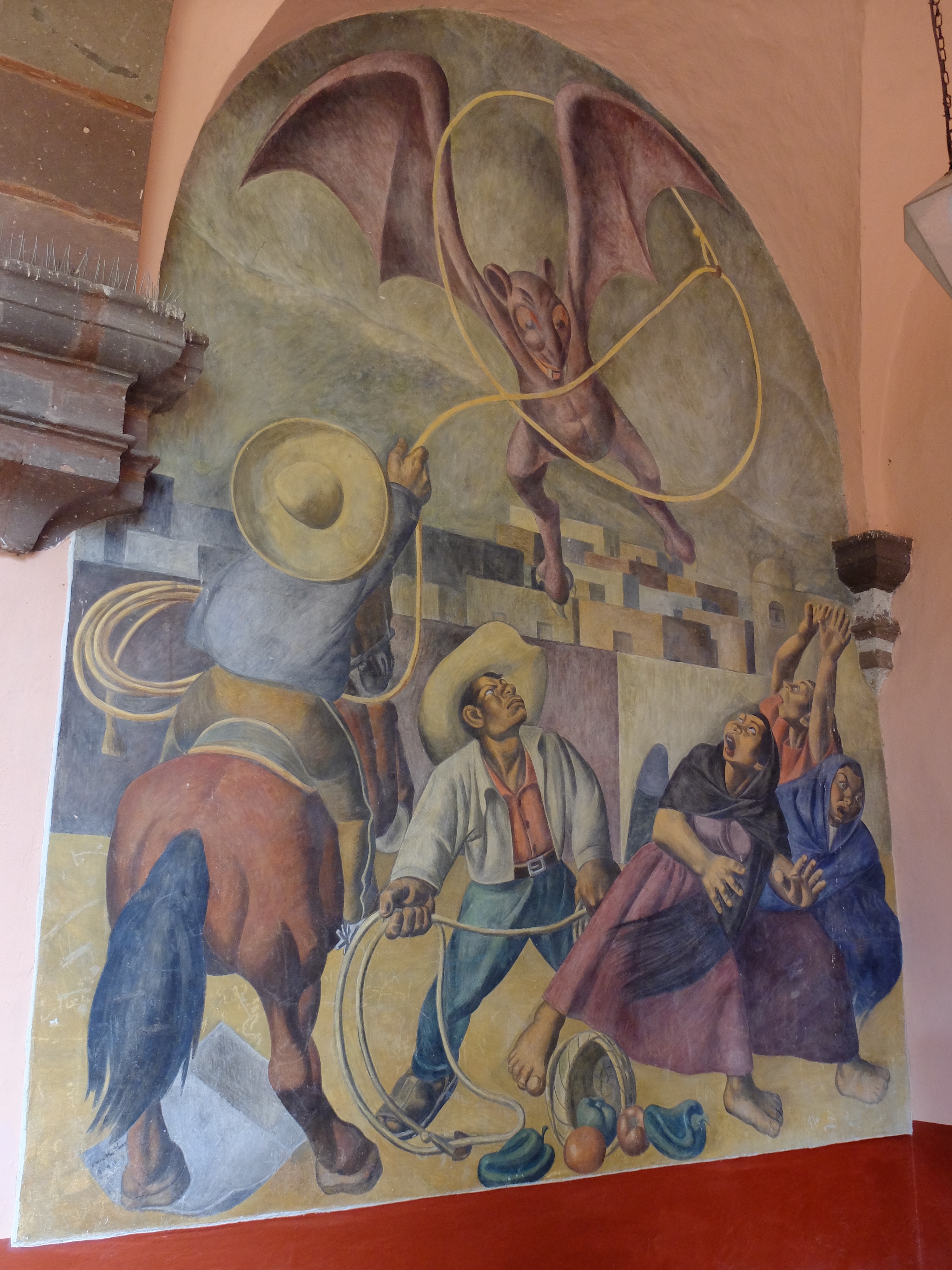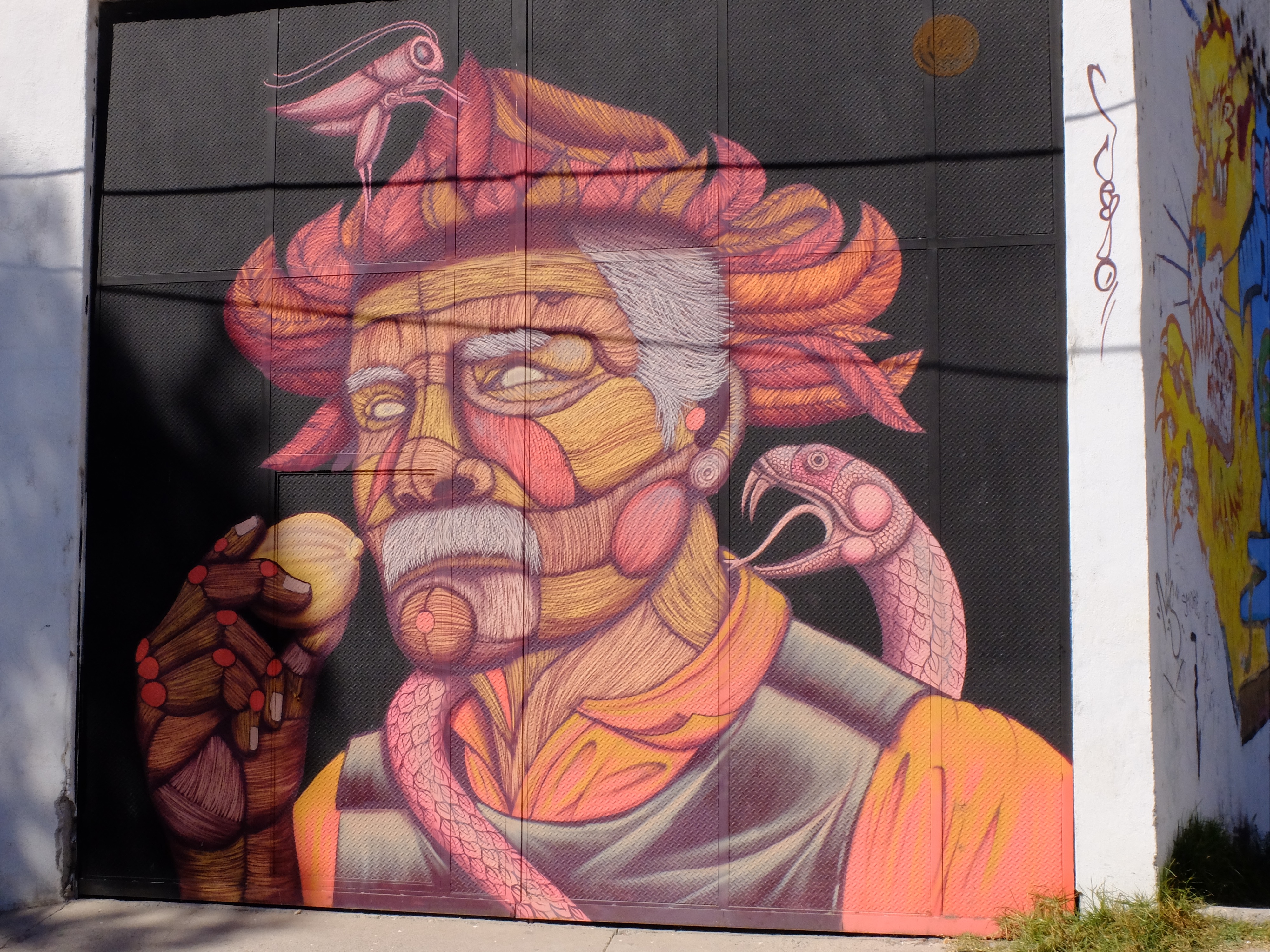
On Sunday I had the privilege of participating in a post-residency talk with Barbara Bickel and R. Michael Fisher of Studio M* exploring what we have learned and are continuing to learn from the work of my winter residency with them (see blog posts January 3 and 13). A recording of this conversation becomes #13 in a series of Parallel Recordings co-created by Barbara and Michael and found on the Studio M* website.
Since returning from my Mexico trip in March, I have been very focused on researching and thinking about what we are currently referring to in Canada as ‘reconciliation’. It is clear to me that my role as a settler, immigrant, white, privileged Canadian is to find my own way to contribute to this process. I have chosen to do this through art and a continuation of the work I began in Calgary. I am engaged in a collaborative arts-based research project with the intention of healing my own relationship to the history of this country in which I have chosen to spend most of my life.
I am a follower of Maria Popova’s Brain Pickings a buffet of elegantly written email messages that brings writers and books current and past into my inbox. I don’t always read the emails, and was so glad I did last week as I discovered an issue full of gifts in wise words from Rebecca Solnit and Robin Wall Kimmerer.
Solnit captures the essence of my intention for this project when she says: “key to the work of changing the world is changing the story”. This expresses the core of my desire to contribute to changing the colonizer story of how Canada was settled, by changing my own internal story. I believe that by decolonizing my own attitudes, opinions and beliefs, through art in the broadest sense of the word, I can change how I respond to the opportunities offered by ‘reconciliation’, and possibly become a resource or inspiration for other settlers to do the same.
“Finding the words is another step in learning to see,” bryologist Robin Wall Kimmerer wrote in reflecting on what her Native American tradition and her training as a scientist taught her about how naming confers dignity upon life. ‘If to name is to see and reveal — to remove the veil of blindness, willful or manipulated, and expose things as they really are — then it is in turn another step in remaking the world, another form of resistance to the damaging dominant narratives that go unquestioned’. …. ‘once you know what you’re facing, you’re far better equipped to know what you can do about it.’
My current thinking has been influenced by Paulette Regan’s book ‘Unsettling the Settler Within’ from which I am gleaning much needed information and perspective helping me to see some new truths and use new language in naming the nature of indigenous/non-indigenous history in Canada. Regan brings forward a compelling argument about the ways in which the historical narrative of the dominant culture has created and continues to support the myth of what she refers to as the ‘benevolent peacemaker’. This greater depth of information and understanding is important I believe, if we are to move beyond the somewhat legalistic approach to ‘reconciliation’ which currently seems to characterize Canadian thinking. I have also found it very instructive in identifying ways in which those of us committed to our own reconciling work can find our own way to action and not simply rely on government agencies and institutions to do the work of ‘reconciliation’.
Regan suggests that the ‘benevolent peacemaker’ myth arose from the comparison between Canada’s approach to treaty making and the US history of Indian wars. This somewhat dubious but convenient line of thought is used to shore up the untruths that prevail concerning what happened during colonization in Canada. These untruths can still be found in Canadian history books, and programs such as the award winning CBC documentary series “Canada: A People’s History” aired in 2000 and 2001, and the 2017 mini-series “Canada: The Story of Us” made for Canada 150 which CBC claimed “celebrates how we transformed differences into understanding and created a unique national identity”. To give them credit the CBC did apologize for this huge cultural mis-step after an enormous public outcry, however it does point to the need for a much deeper education on what a decolonizing process needs to look like.
Regan’s text takes me on a ride of optimism and despair. She quotes Brian Titley an historian’s comments that in the context of settlement and treaties it is settler attitudes of arrogance, contempt, denial, fear and guilt which were and are the hallmark of Canadian government policies and programs inflicted on indigenous peoples. The denial of racism is a major impediment to meaningful ‘reconciliation’ in Canada, yet we all know the story of Colten Boushie. We need more than apologies and financial settlements to move us into a new narrative. As I edit this post on the morning of May 23 I hear that our Prime Minister is in Saskatchewan today to ‘exonerate’ Chief Poundmaker of the Cree nation of the treason for which he was imprisoned 130 years ago. There is such irony in this occurring in the very province where a young Cree man was shot and killed by a settler farmer simply for being on the farmer’s land. The award winning documentary
about this Nîpawistamâsowin: We Will Stand Up is currently touring Canada.
One encouraging note from a national benchmark survey is the finding that 67% of Canadians believe that individuals have a role to play in bringing about full reconciliation. The question then is how can we as individuals participate meaningfully in the process?
I am beginning by researching and at this stage my art is in my writing. I am encouraged by the words of Toni Morrison who in a 2013 speech at Vanderbilt University said “I am a writer and my faith in the world of art is intense but not irrational or naïve. Art invites us to take the journey beyond price, beyond costs into bearing witness to the world as it is and as it should be. Art invites us to know beauty and to solicit it from even the most tragic of circumstances. Art reminds us that we belong here. And if we serve, we last. My faith in art rivals my admiration for any other discourse. Its conversation with the public and among its various genres is critical to the understanding of what it means to care deeply and to be human completely. I believe.”
In Unsettling the Settler Within, Chapter 2 Rethinking Reconciliation I was caught by a quote: ‘….as currently envisioned, reconciliation is actually a huge obstacle to justice and real peacemaking…the blame for this lies with………. those settlers whose ignorance and wilful denial of our historical reality detract from any possibility of meaningful discussion on true reconciliation’
those settlers
whose wilful denial
of historical reality
detract from
any possibility
of meaningful exchange
on the truth
about the progress
of reconciliation
there is rhythm
in these words
like the drum beat
in the circle
sets the heartbeat
for the song
there is learning
for this settler
in the research
deeply studied
articulated
eloquently framed
reading, learning,
teaching, listening
these days the
journey moves me inside
my own internal landscapes
need to be explored
the years I’ve spent in Canada
as immigrant
and mother,
as wife
and friend,
student
and teacher,
as leader and as follower
curious and questioning
listening, wondering,
seeking and asking
for a truth I understand
I call myself a witch
follow celtic pagan teachings
feel resonance in ways they ask me
to relate to mother earth
finding in the teachings
of indigenous relations
ancient wisdom and medicine
familiar yet new
artist, woman identified as queer
gender bending far beyond
traditions of my youth
constraints and limitations
set by culture of my ancestors
cast to the winds
no longer relevant to the life I seek to live
new foundations now define me
supporting change in many ways
aging has become a friend
a time when crowded memories
from length of life richly led
with love and hope
now hold me strong
with kinder gentler gaze
settler colonizer
are labels I attend to
harsh words yet strong
push me leaning fiercely
into truths denied
a laser beam illuminating change
within me lives the product
of my heritage
the English girl
shaped and trained in
Euro-centric thought
my culture is the culture
of the colonizer
the treaty maker
more truthfully named
the treaty breaker
imposing systems
foreign and unknown
to eliminate indigenous
rights and culture
steal lands and resources
all in the name of
benevolent peacemaker
to re-name, re-vision
re-write the story
this now is my work
my quest and my commitment
to find the place within
from which I can arise
emergent, open willing to engage
in meaningful reciprocal
healing and change
noticing my thoughts
watching my responses
observing their nature
questioning the underlying
values and beliefs
from which they form
sensing shifts in
long held core foundations
of influence, attitude,
opinions and beliefs,
I catch a glimpse of
something new in me
someone who can watch herself
and catch herself in time to seed
her own response
in newly fertile ground
I have no definition for
true reconciliation
the dictionary presents
two different views
is this the
‘restoration of friendly relations’
or is it the
‘action of making one view or belief
compatible with another’
the former sounds less complex
the latter more a challenge
do we have the will, desire and skill
to honestly, determinedly
reach out to one another
on the warp of new relations
in the twenty-first century
and weave the weft of Canada
with threads of heartfelt truths
During the conversation last Sunday with Barbara and Michael, I was challenged with the question of how the research I am doing both anthropological and arts-based, can make a difference in the dominant culture. I have a deep faith that learning to reclaim our relationship to the earth is a way to shift the beliefs behind actions on the economy, social/cultural/environmental policies, climate change, and indigenous/settler relationships. The process of art opens us to the healing available in that relationship and in the ancestral medicine and teachings of indigenous peoples. Through my collaboration with an indigenous friend/artist/elder in training, I am learning from the teachings of the elders, and the teachings of the land. Honouring and re-membering the original peoples through my art in the present, this is the medicine for my healing. My work is driven by the desire to find the truth for myself in the complex and enduring cultural rift that exists between indigenous and non-indigenous populations in this country. As Dame Iris Murdoch observed “A motive for change in art has always been the artist’s own sense of truth.”
Barbara proffered that the artist is a distiller and as such I have been weaving ancestral threads in my art practice since the first piece I created as a co-researcher on her PhD dissertation team in 2007. That piece is a map of the UK mounted on board, with woven rope, rocks and shells from the beach at my mother’s home on the South coast of England, and a frieze of wording around the edge ‘we are ancestral threads in the eternal weaving of our ancestors’. She pointed out the connectivity between the art of my current research focus evolving from the residency, with the art produced in a residency in 2010 at Artscape Gibraltar Point, Toronto Islands. In 2010 I was distraught at the oil spill created by the Deepwater Horizon accident and used found plastic objects from the beach to create Oil Catcher. In 2019 I used found feathers and a found embroidery hoop to create a piece evoking the connections between people and the land in Great Horned Owl. The themes of the circle, the web, red thread, symbols of culture and nature all appear in both pieces.

Oil Catcher 2010
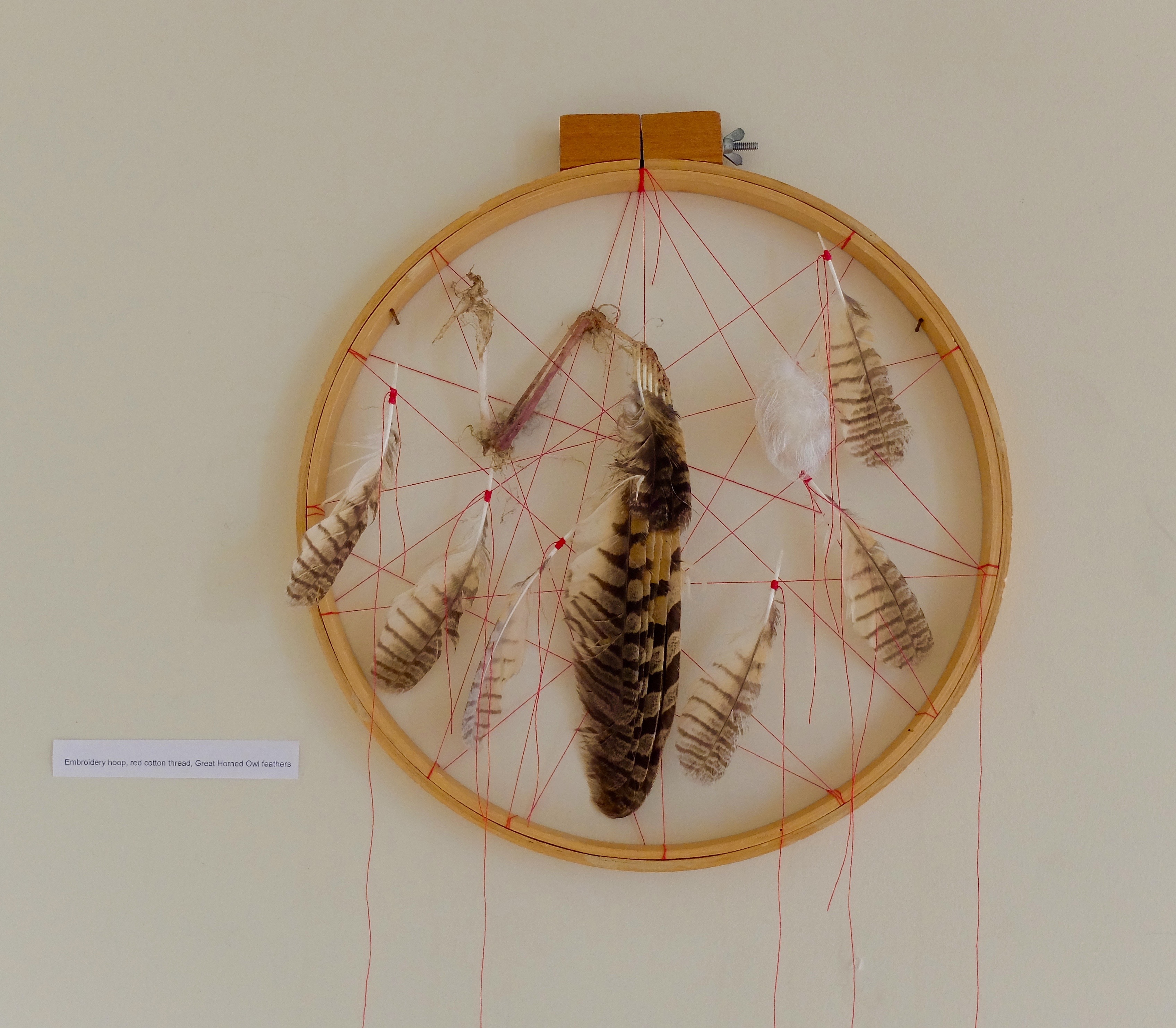
Great Horned Owl 2019
Barbara’s long time influence as my art mentor and collaborator, is now enriched by Michael’s input as artist/co-creator/teacher/guide. We three are now co-presencing, co-becoming with each other within the holding place that is Studio M*. Weaving our individual and collaborative threads into a web of restorative and creative exchange for healing and transformation.
In response to Michael’s invitation for any final observations on the call, I said: “I’m very aware of my privilege to be here, now, healthy, able, well-resourced and supported, with time to actually dedicate to doing this work. I recognize that this is not a process that is going to fit for others, I’m not suggesting that, what I’m hoping will come from this process is some thing(s) or happenings that will be a resource for others to pull them into their own process of curiosity, bringing healing around this big rift in our country, that really needs to be healed if we are to look optimistically at change on many levels in the future.”




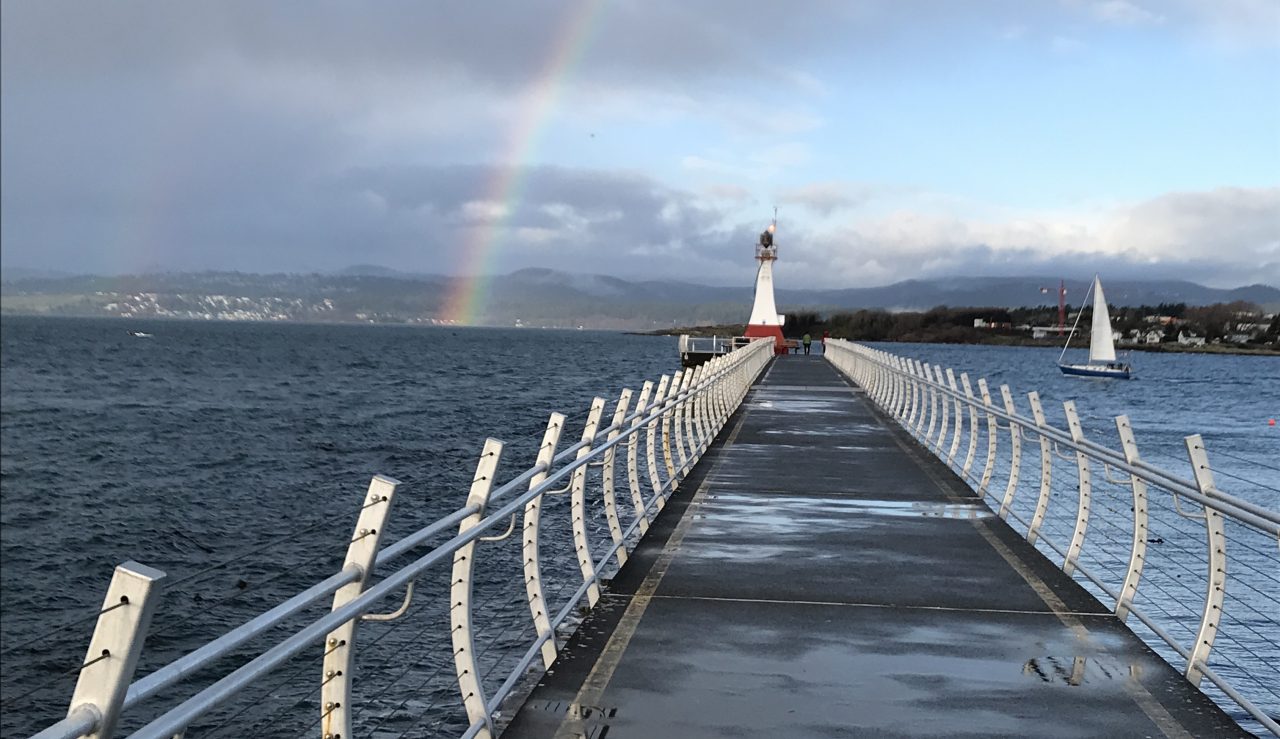





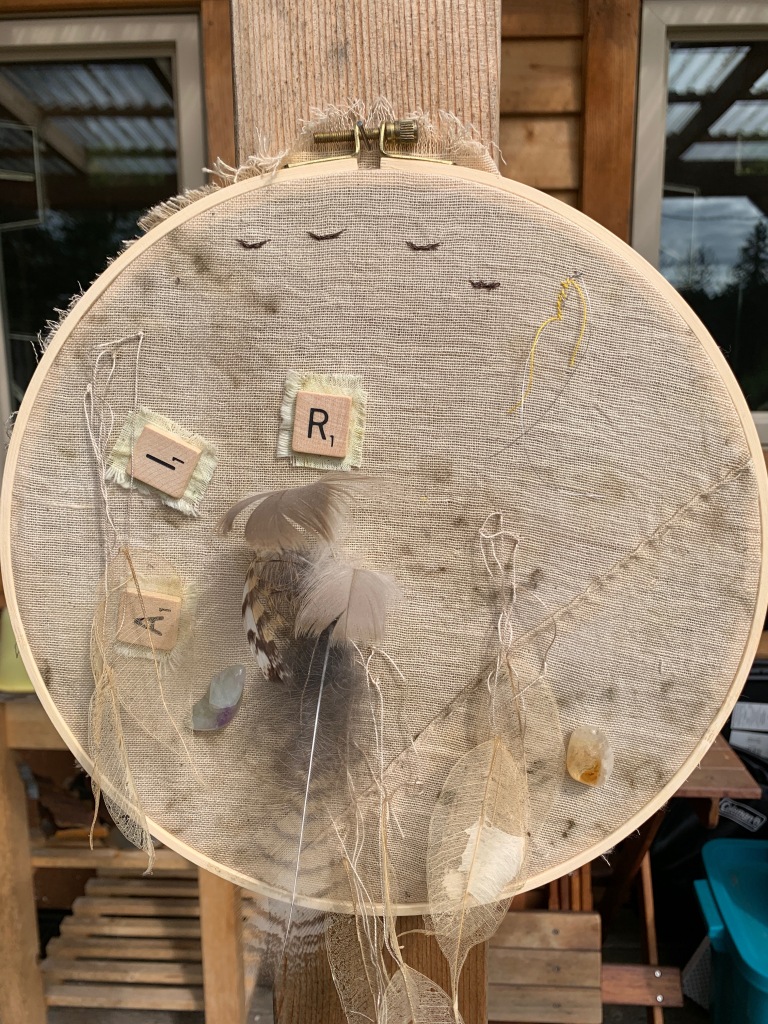

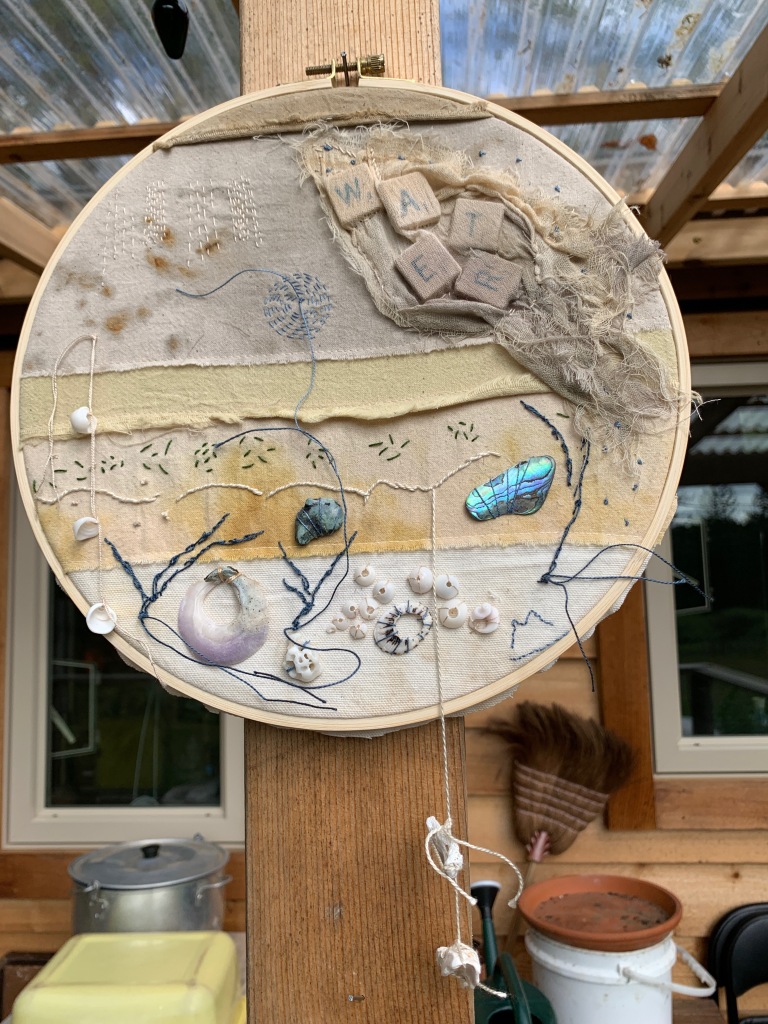



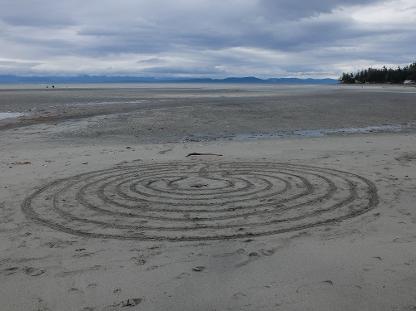

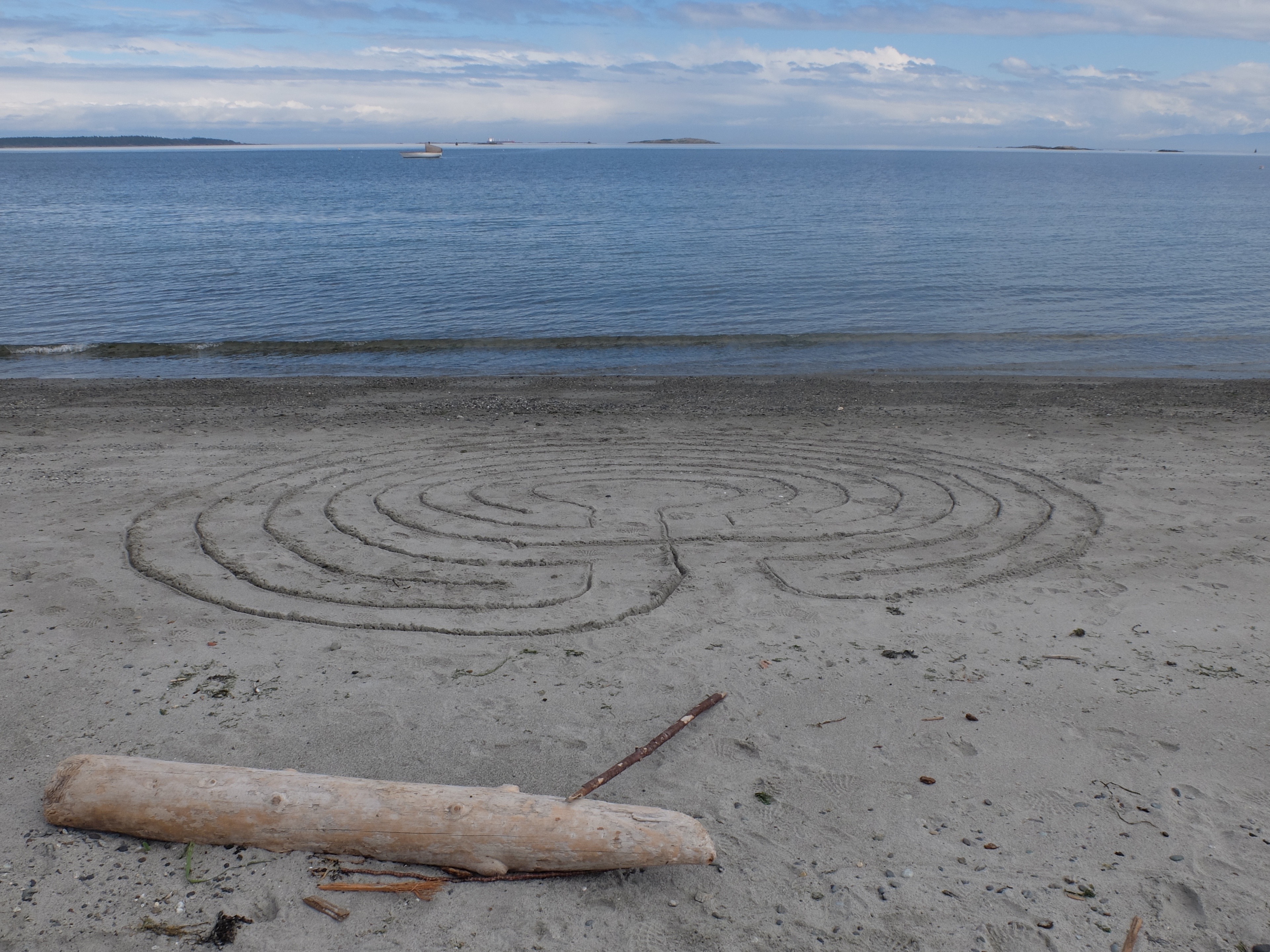








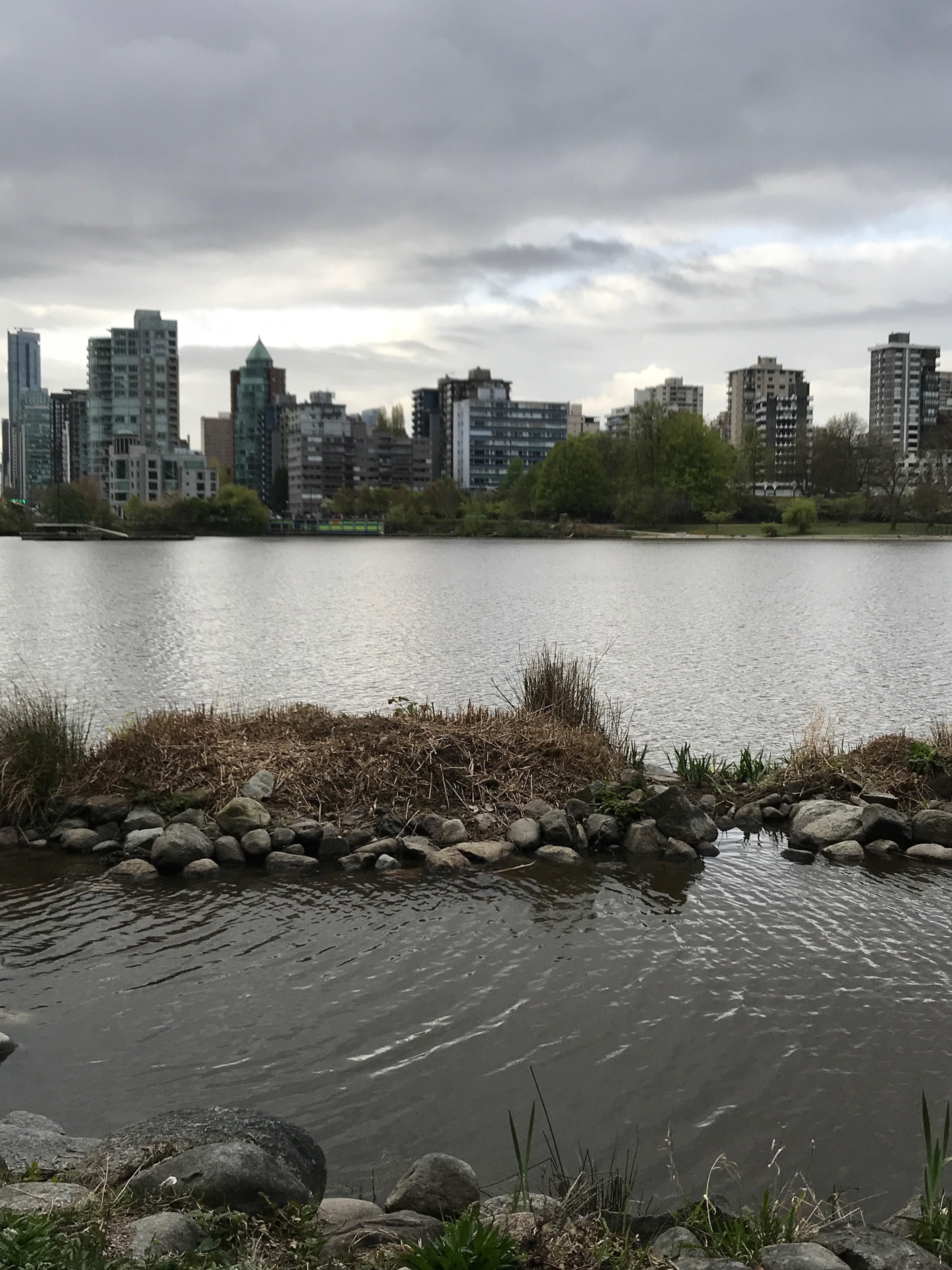
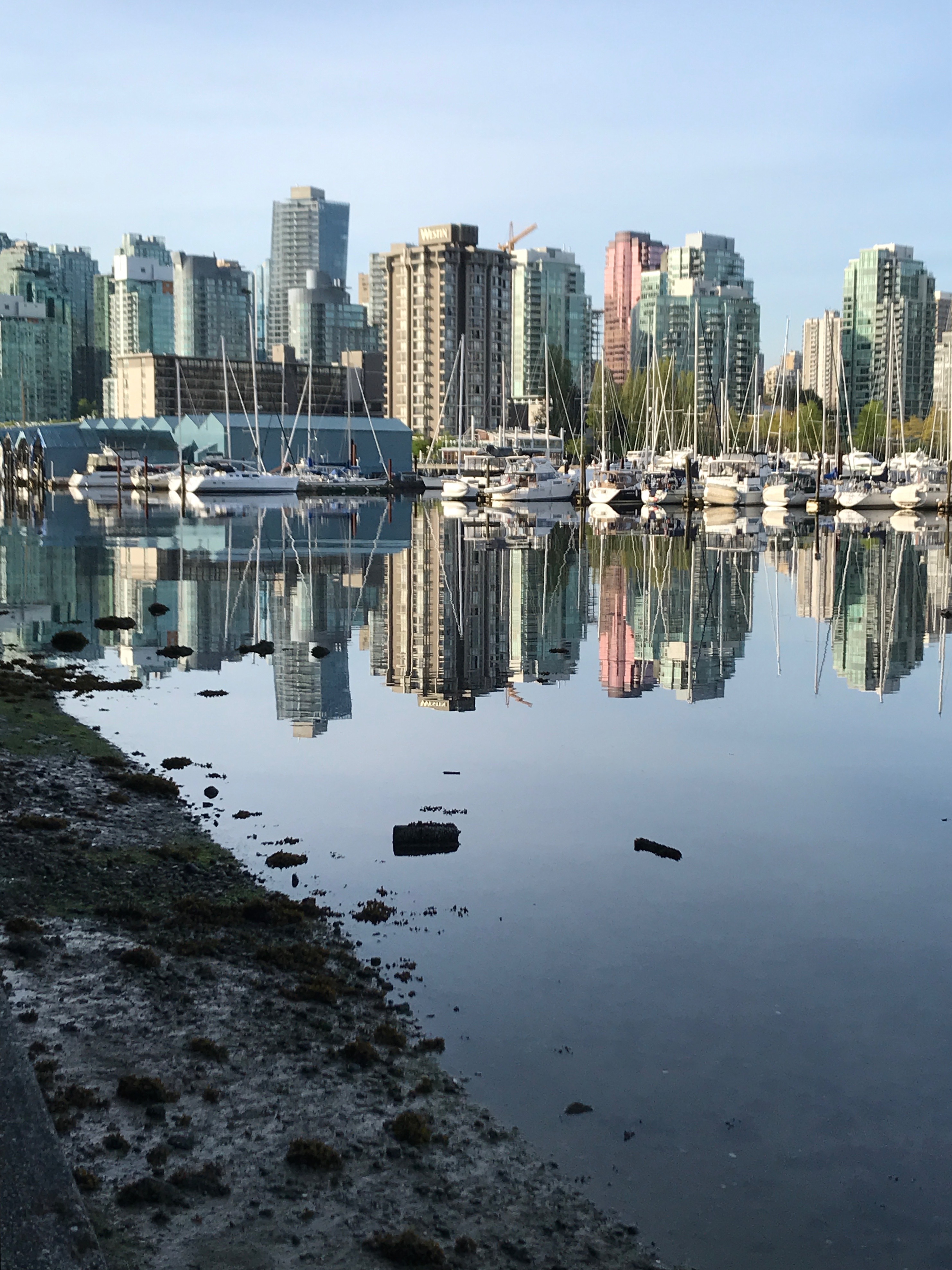
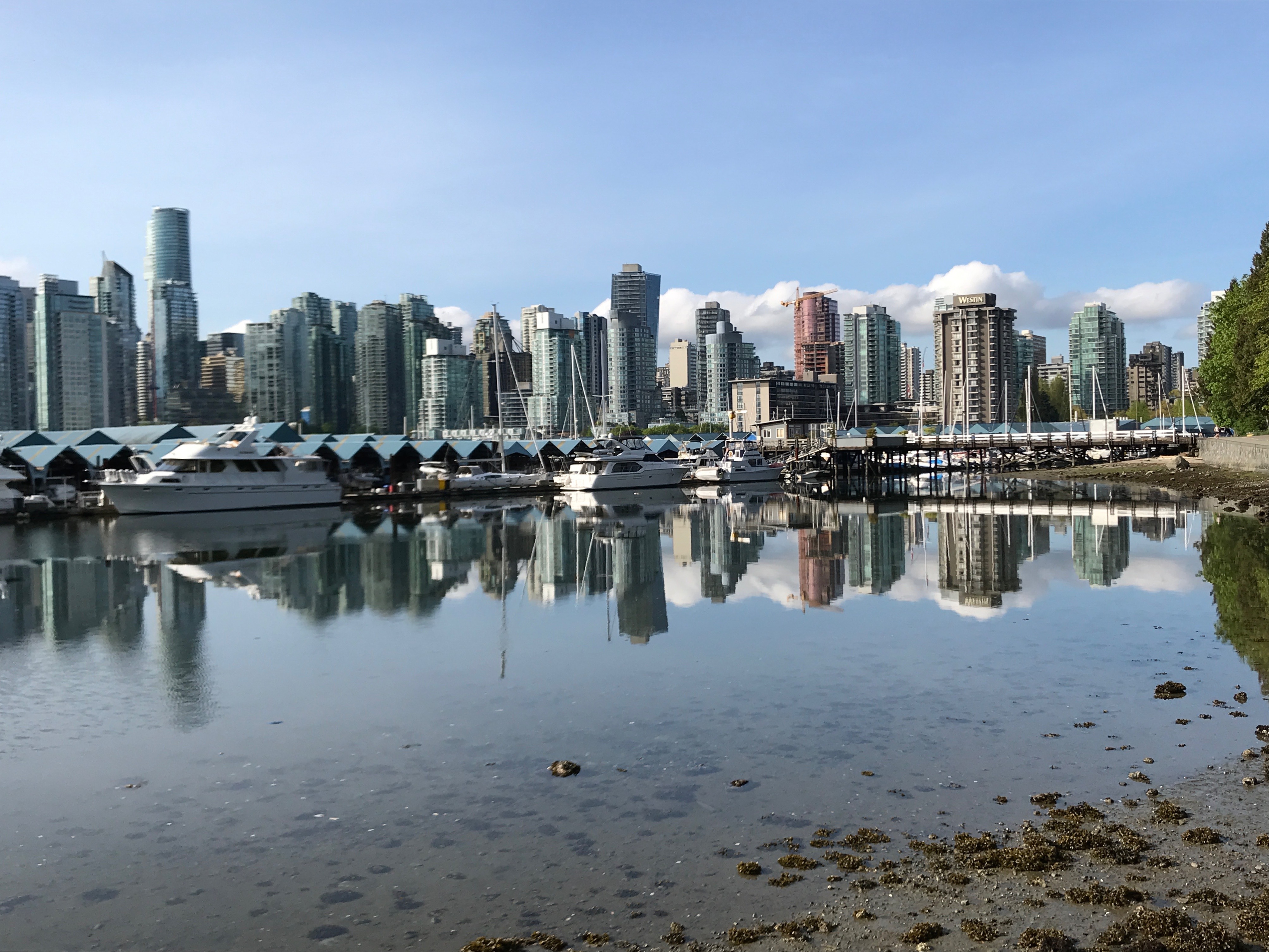



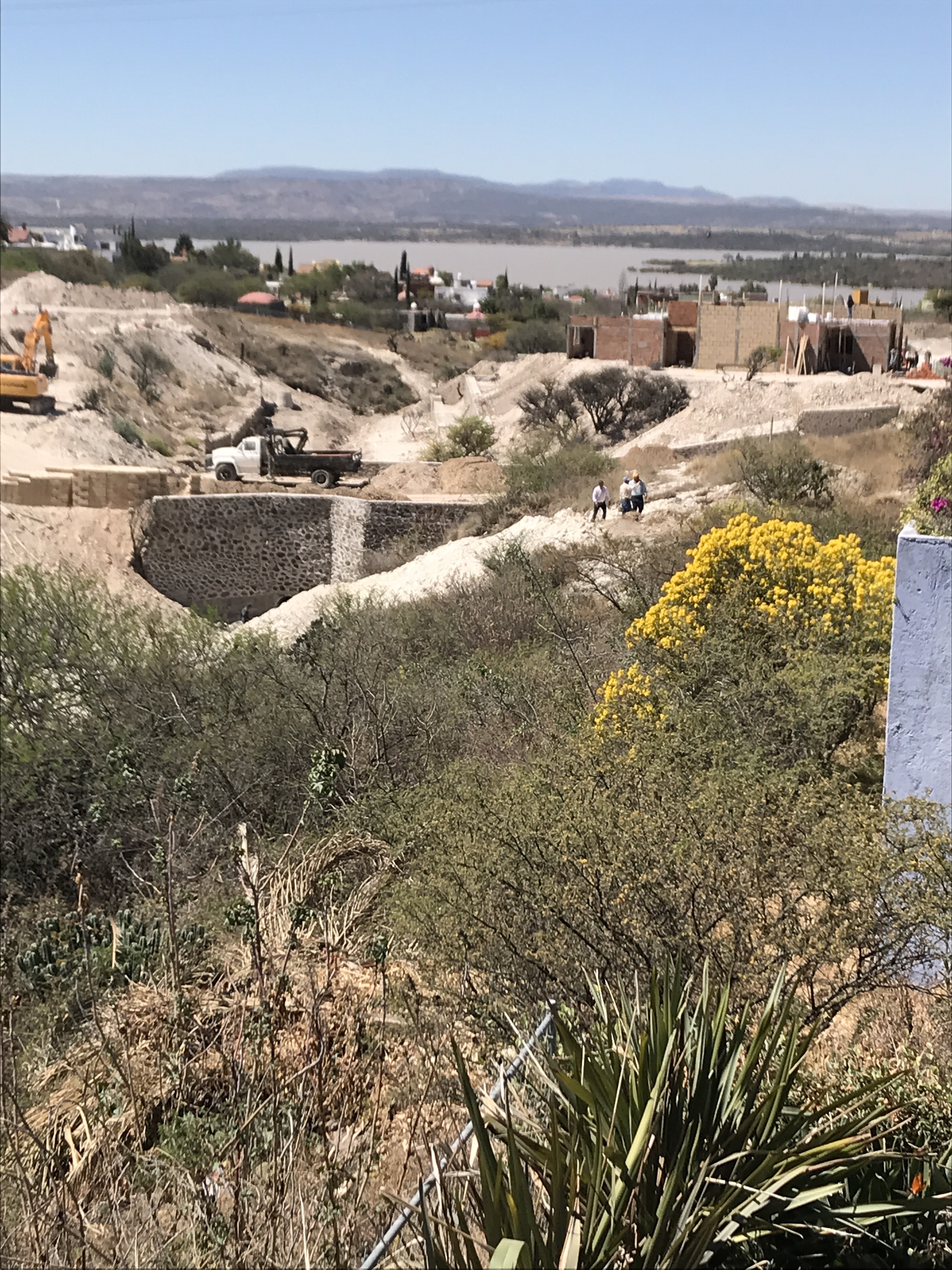 view of Los Frailes from the studio deck
view of Los Frailes from the studio deck


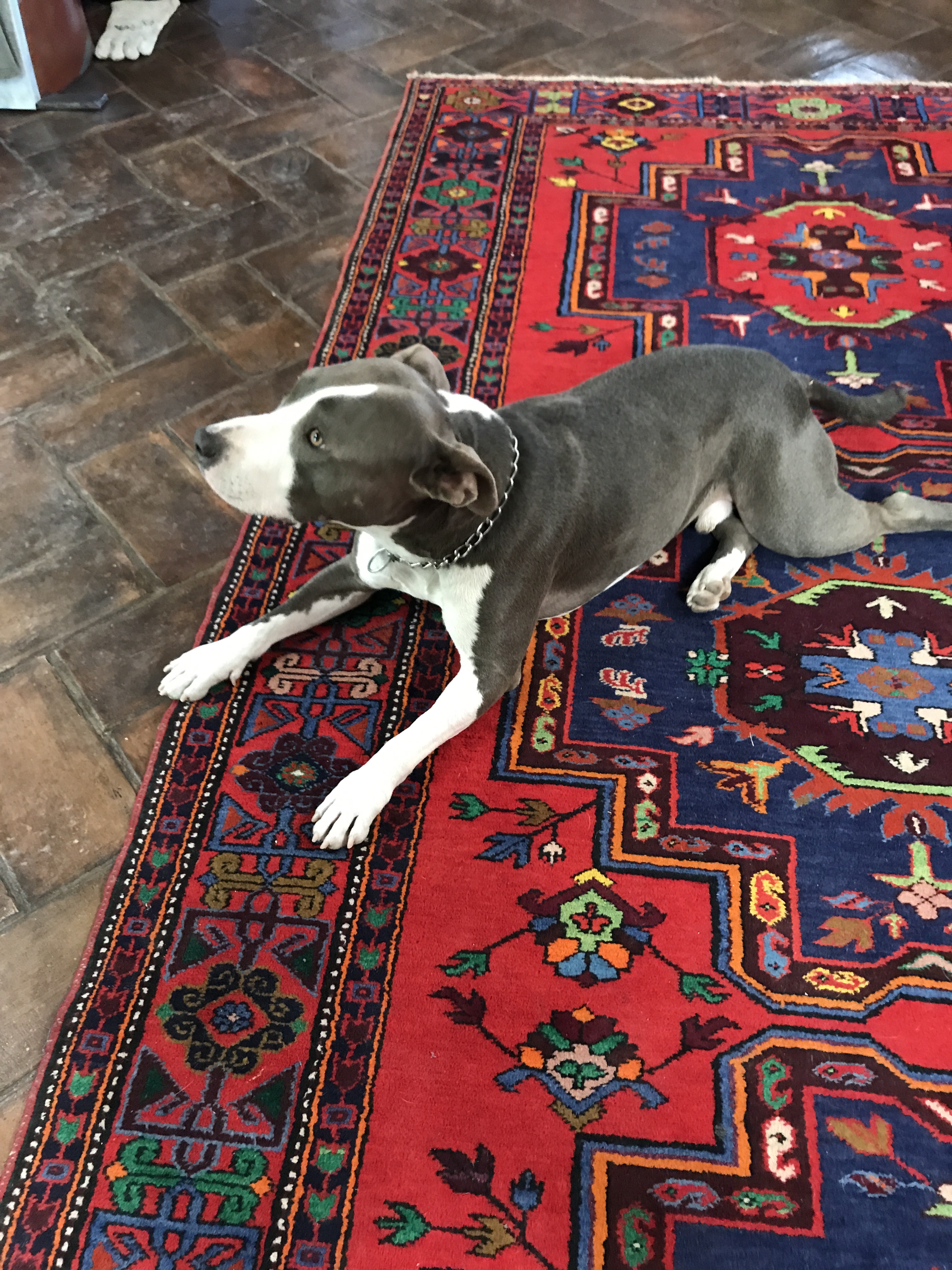 Alex and his father Lane have a big studio full of old style, accessible and easy to work with metal tools. The two of them facilitate with great ease, enthusiasm and joy supporting small groups to create metal art of all kinds. In addition to the tools, the studio has a great collection of metal bits and pieces gleaned from frequent scrapyard visits on Alex’s part, and regular donations from his circle of contacts in the metal scrap business.
Alex and his father Lane have a big studio full of old style, accessible and easy to work with metal tools. The two of them facilitate with great ease, enthusiasm and joy supporting small groups to create metal art of all kinds. In addition to the tools, the studio has a great collection of metal bits and pieces gleaned from frequent scrapyard visits on Alex’s part, and regular donations from his circle of contacts in the metal scrap business.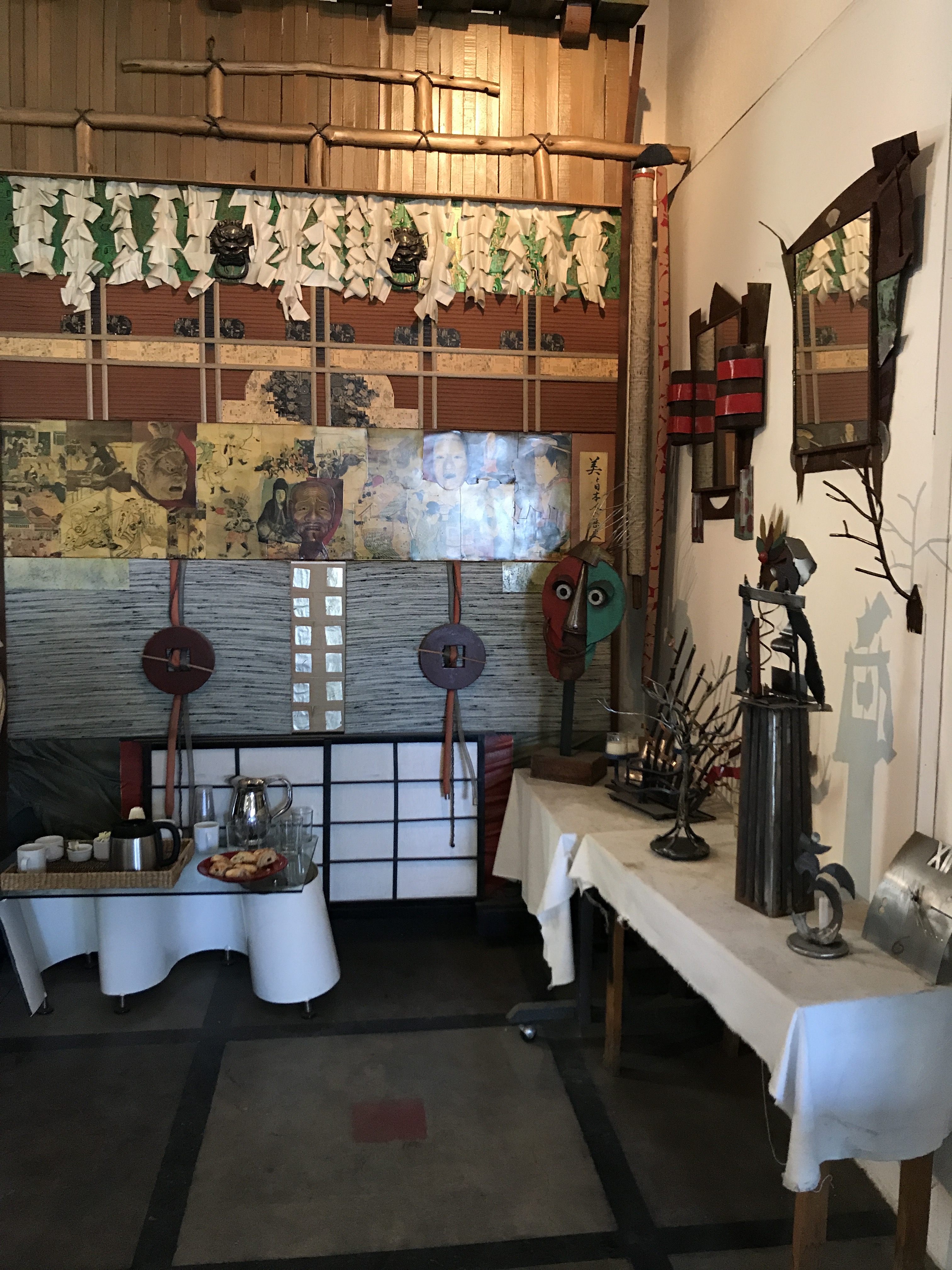

 Day one we ‘met’ the tools, everyone had a chance to use every tool, all the while the group of us were scheming and imagining what we might make. By the end of the day concepts were being drawn up, bits and pieces gathered and arranged, larger pieces of metal being cut, the creative juices really flowing. I knew early on that I would make a mask, don’t know why, I’ve never made one before, the idea of a two part representation, perhaps the classic theatre mask, perhaps some other approach. I mulled it over that evening and in the morning it was clear, one side would be pre-columbian, the other European. I was set and ready to roll.
Day one we ‘met’ the tools, everyone had a chance to use every tool, all the while the group of us were scheming and imagining what we might make. By the end of the day concepts were being drawn up, bits and pieces gathered and arranged, larger pieces of metal being cut, the creative juices really flowing. I knew early on that I would make a mask, don’t know why, I’ve never made one before, the idea of a two part representation, perhaps the classic theatre mask, perhaps some other approach. I mulled it over that evening and in the morning it was clear, one side would be pre-columbian, the other European. I was set and ready to roll.
 Cutting, welding, shaping, turning, finding small pieces, gradually the sections began to form themselves into something. Lots of helpful input from Lane and Alex, a hand here and there where my welding skills failed, experimenting with each step, just the way I love to work.
Cutting, welding, shaping, turning, finding small pieces, gradually the sections began to form themselves into something. Lots of helpful input from Lane and Alex, a hand here and there where my welding skills failed, experimenting with each step, just the way I love to work. the base steel form cut with the plasma cutter, then cut in half and welded at an angle gave me my starting point. bits and pieces gathered from the collection made eyes.
the base steel form cut with the plasma cutter, then cut in half and welded at an angle gave me my starting point. bits and pieces gathered from the collection made eyes. acid washed steel strips turned around the cutter handle, became pre columbian hair.
acid washed steel strips turned around the cutter handle, became pre columbian hair.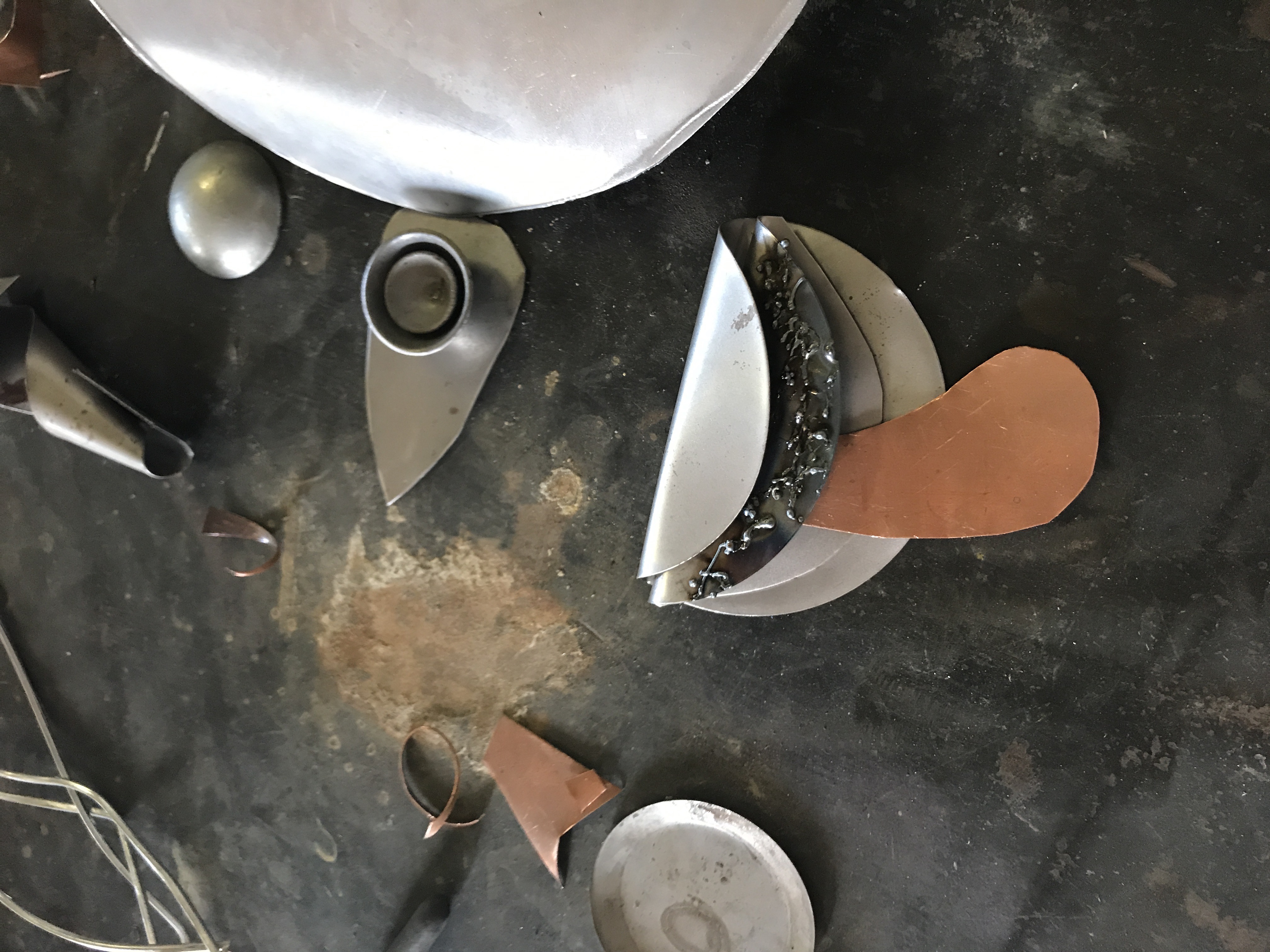 then the mouth, two folded steel circles, some welding art and a piece of copper for the tongue, had to have that copper!!
then the mouth, two folded steel circles, some welding art and a piece of copper for the tongue, had to have that copper!! with lots of help from Lane, masking the mask to add the final touch, paint in two shades for added emphasis.
with lots of help from Lane, masking the mask to add the final touch, paint in two shades for added emphasis.
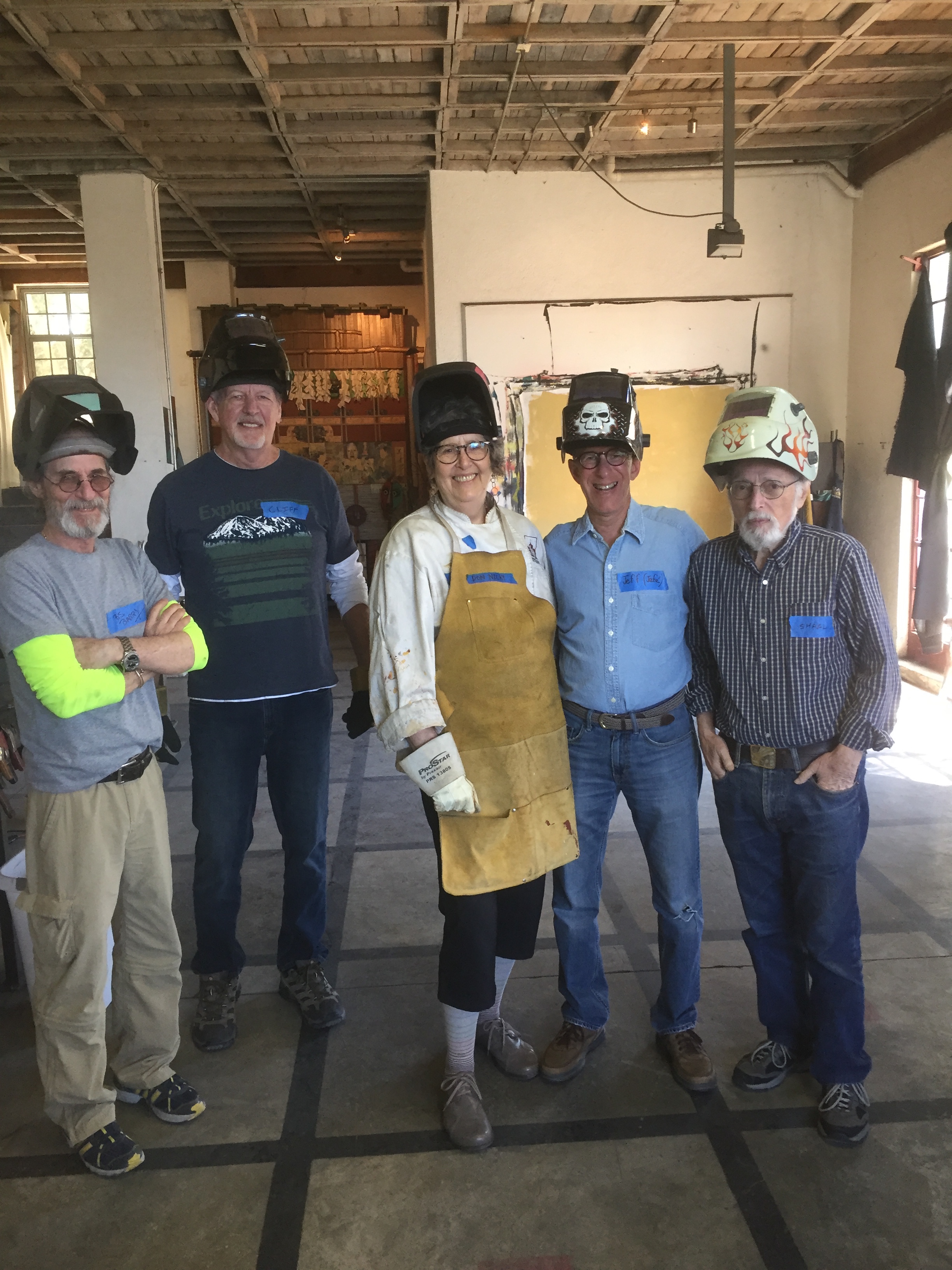




 marguerita time at the hot springs with Doug Rice
marguerita time at the hot springs with Doug Rice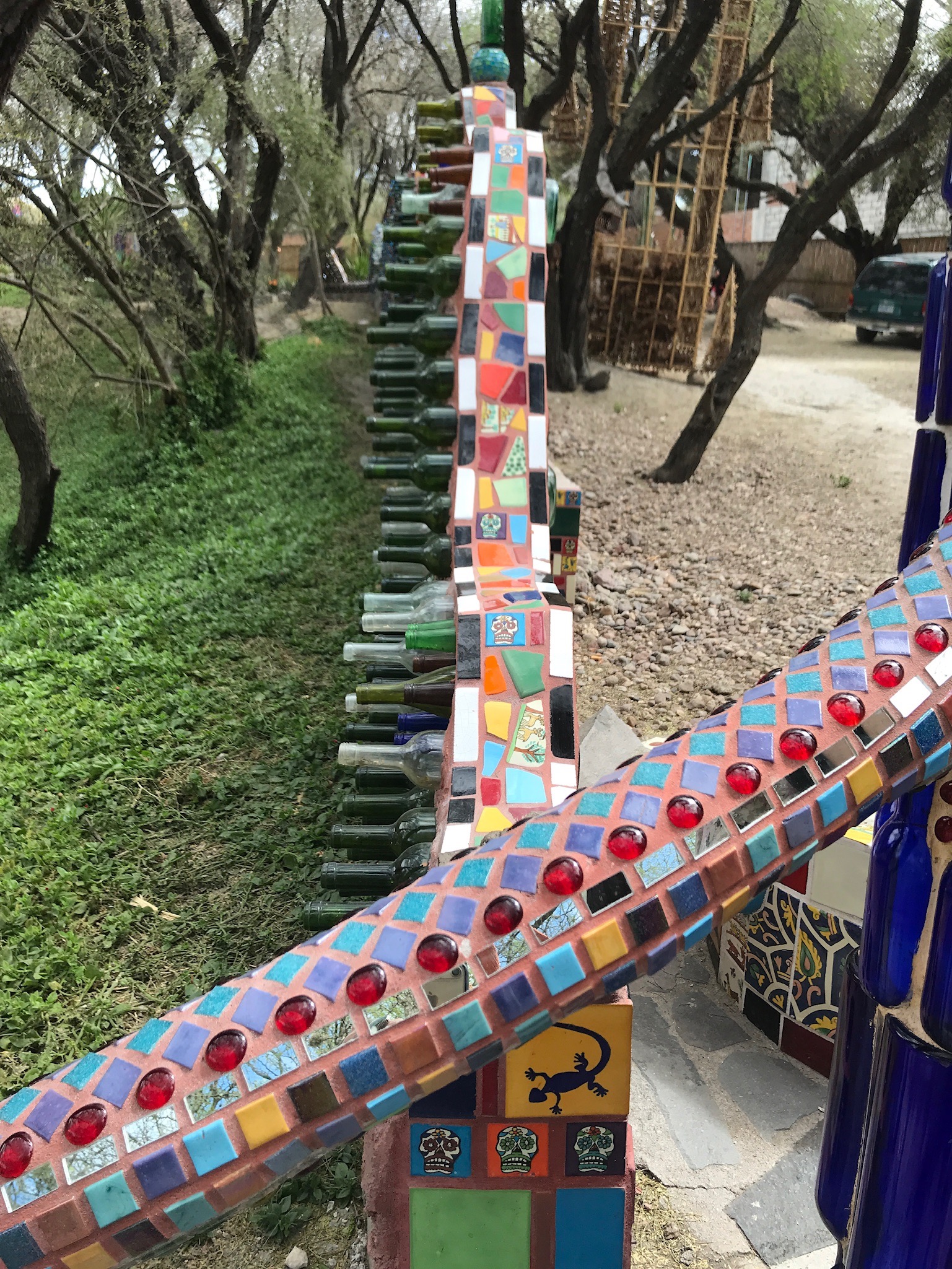 welcoming entry
welcoming entry come into the gallery
come into the gallery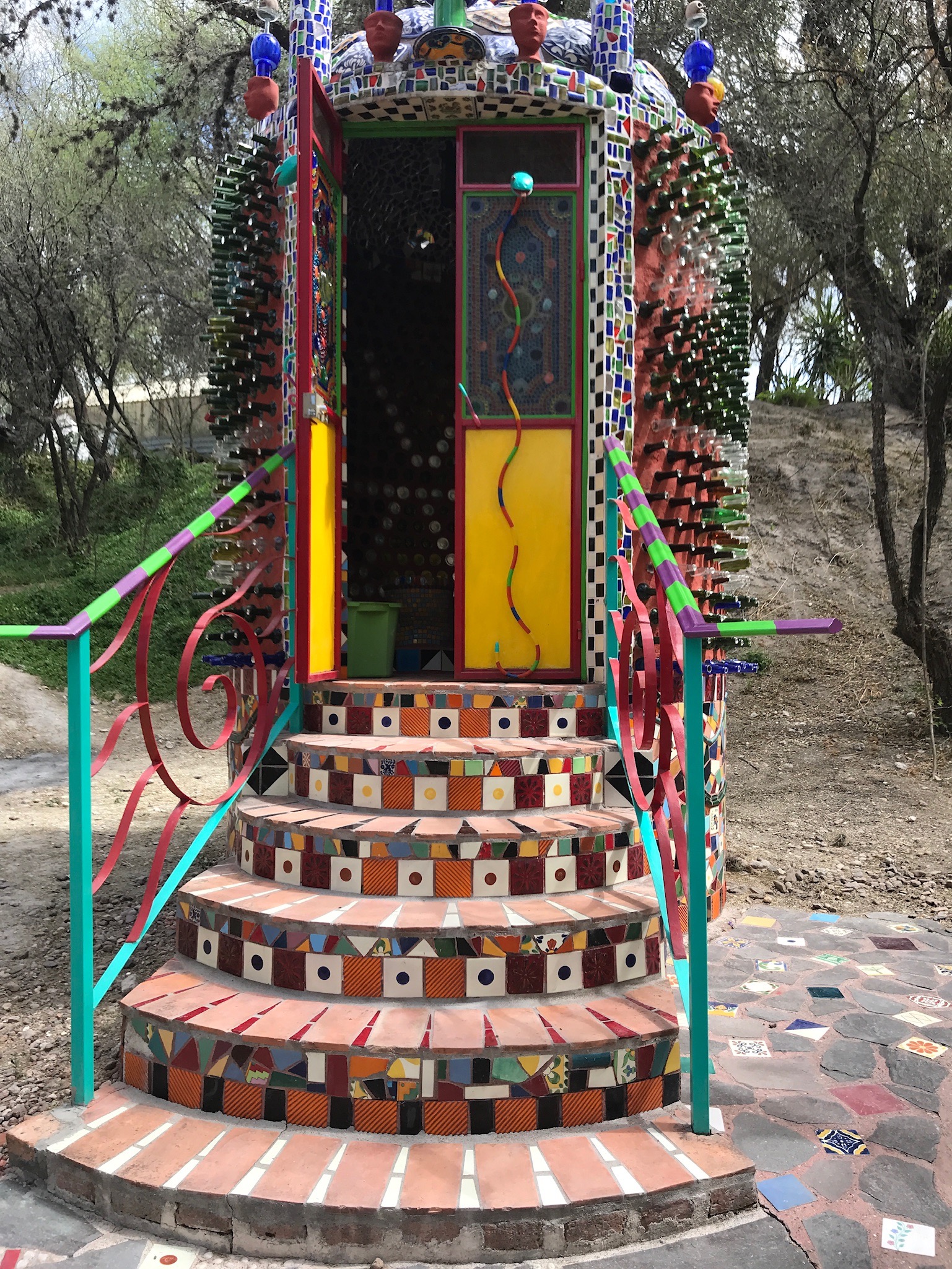 the composting toilet
the composting toilet the exhibit
the exhibit




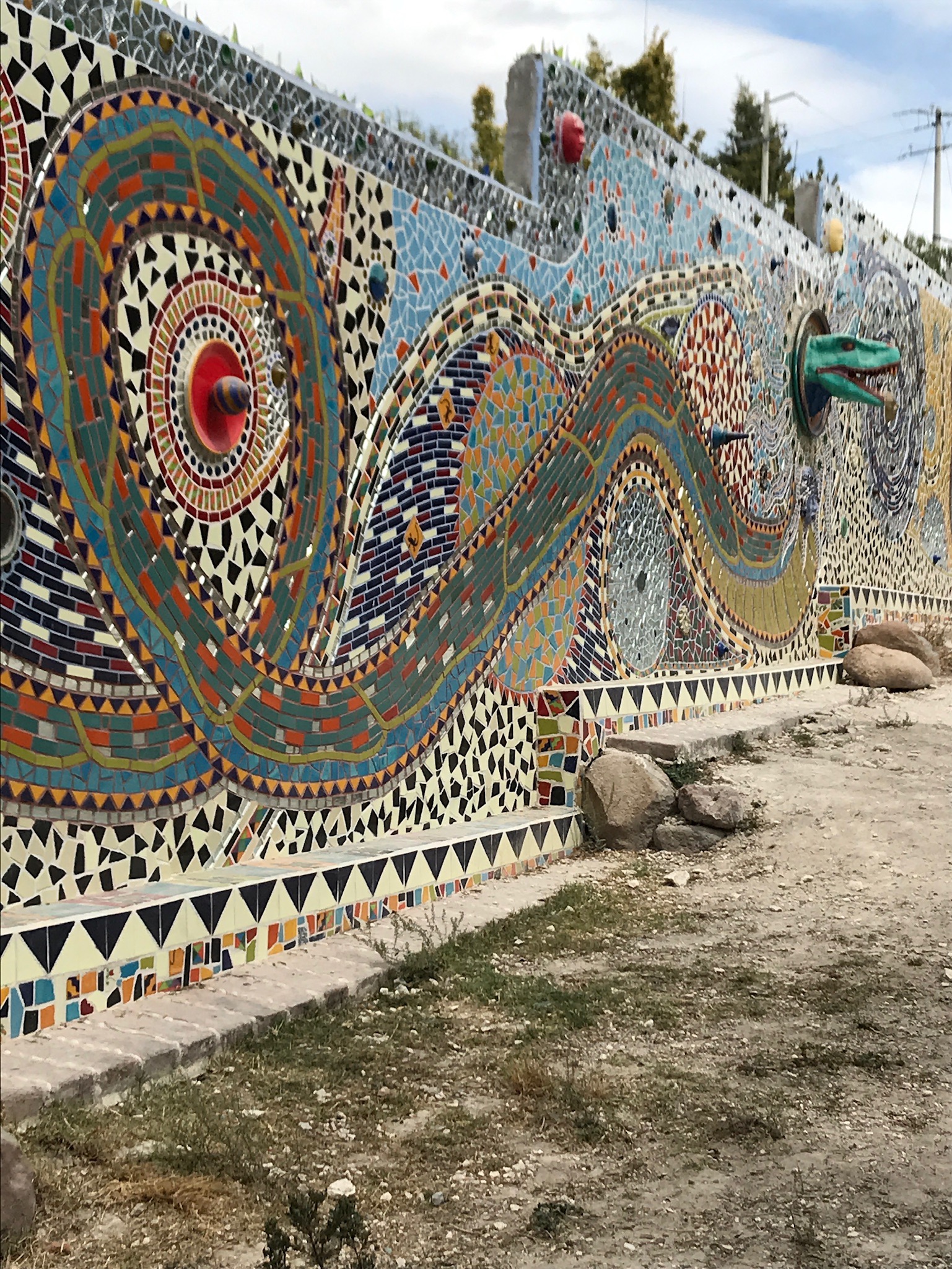 back yard wall in process
back yard wall in process